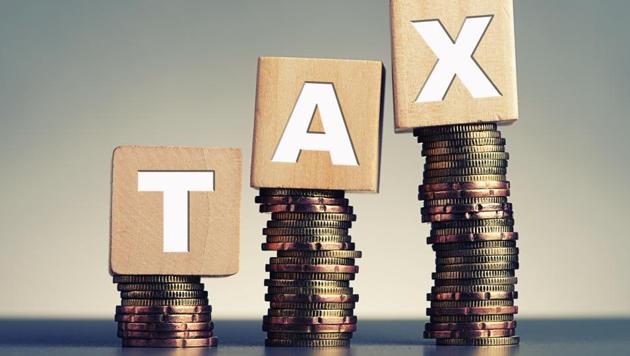Higher taxes on the super rich is not a sound idea
The current policy will push India’s best talent offshore, affecting the critical finance and technology sectors
Since its resounding election victory in May, the Narendra Modi-led Bharatiya Janata Party (BJP) government has committed to a number of liberalisation measures, including the launch of India’s first private train on the New Delhi-Lucknow route, an overhaul of the medical education regulatory structure, and critical improvements to the bankruptcy code regime. In addition to these policy changes, the government is pushing an unprecedented financialisation agenda.

But it was the move to raise taxes on India’s highest earners that has been receiving a disproportionate degree of media attention. The government has been criticised heavily, and rightly so, because this policy is at cross purposes with all its other efforts to make India a $10 trillion-plus economy. It would not be an exaggeration to say that raising taxes is a nuclear strike on India’s fast-growing financial and technology industries, which are key contributors to our emerging knowledge economy.
The arithmetic driving the tax hike is straightforward. There are about 80,000 individuals who earn ₹1 crore per year and above, and 6,361 persons who earn over ₹5 crore per year. Soaking this small group will yield about ₹12,000 crore per year, which is equally minuscule, given that it would constitute about 0.5% of the annual revenue of the government’s ₹24 lakh crore in revenue in 2018.
This presumes that nothing changes, of course. But corporate promoters will restructure how they receive salaries. Those holding the bag will be working professionals. The budget didn’t stop there: New taxes were imposed on share buy backs to “close a loophole” and bring parity with taxes on dividends. It is notable that dividends are triple taxed in India for the rich: First, corporate earnings are taxed; then, the company has to pay dividend distribution tax, and, finally, those getting dividends above a certain threshold pay additional surcharges on that dividend income. Rather than ending this triple taxation, the government extended the perversity to stock buy backs. To top it all, India now has progressivism in both direct and indirect taxes, given that goods and services treated as luxury items already see high taxes under the multi-rate Goods and Services Tax regime.
As India tries to grow from a $3 trillion GDP economy to a $10-trillion-plus economy, the financial services and technology sectors will have to play a critical role in driving capital allocation and productivity growth, and both these sectors depend on skilled, high quality human capital. It is talent that is the capital equipment of these knowledge-driven industries, and by creating a tax structure that especially burdens knowledge workers and capital providers, India has made it compelling for highly sought after, globally mobile talent to leave the country.
It is difficult to answer why a top-notch fund manager, software engineer, data scientist, doctor or oncologist who can pursue career opportunities in Singapore or the United States should sign up to pay Scandinavia-level taxes in exchange for Africa-grade public services. Unless the goal of the government is to precipitate a new quit India movement or expand the annual Pravasi Bharatiya Diwas celebration, the high tax policy will undermine all the laudable work done to reform higher education, scientific research and the financial system.
There is a global war for talent underway, as incumbent and rising powers compete for the best brains to enhance their capabilities in science and technology. India should be looking to attract C-suite talent from all over the world, but the current policy will achieve the result of shifting our best talent offshore. Human capital operates on an extreme power law curve, with the top 5% being several times more valuable than the bottom 95%. The reason ecosystems such as London, New York and Silicon Valley are so central for finance and technology is that they have agglomerated some of the world’s best talent in one place.
That potential may never be realised, because short-sighted policy by the government ignores what India might be giving up to eke out a tiny amount of tax revenue. The stage is set for countries like Singapore, which would gladly absorb the cream of India’s human capital, to become India’s technology and finance capital. Instead of scrounging for small amounts of tax today, India’s objective should be to establish Mumbai as the financial centre, and Bengaluru as the technology capital of south and southeast Asia. Such a vision would require both a competitive tax policy as well as unilaterally opening borders for qualified immigrants under a points-based system.
There have been media reports that wasteful public sector units are set to receive massive taxpayer-funded bailouts. The government requires capital to fund welfare programmes and infrastructure, but at the same time, it is expending enormous taxpayers’ money on propping up failed public sector companies. Crippling India’s competitiveness by offshoring the most value-creating industries to gain nominal tax revenues is not the way to raise revenue.
There are two other ways to increase revenue.
The first is to impose income tax on agriculture income above a certain threshold. Contrary to popular perception, India has a many wealthy farmers and even profitable agriculture industry corporate groups who are not paying any income tax because of the tax exempt status of agriculture.
The second method is to sell off State-owned companies and public assets lock, stock and barrel to the private sector. This will result in the better utilisation of the assets, and remove liabilities from the government’s balance sheet.
Both these approaches will entail facing off against powerful lobbies and unions. But Modi enjoys popularity and credibility; should he make the case to the people, citizens will stand with the Union of India against the unions of India.






